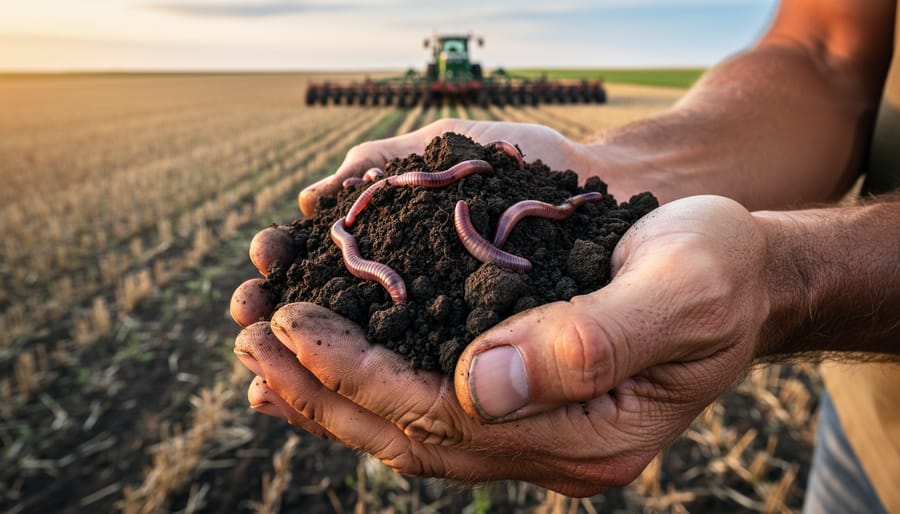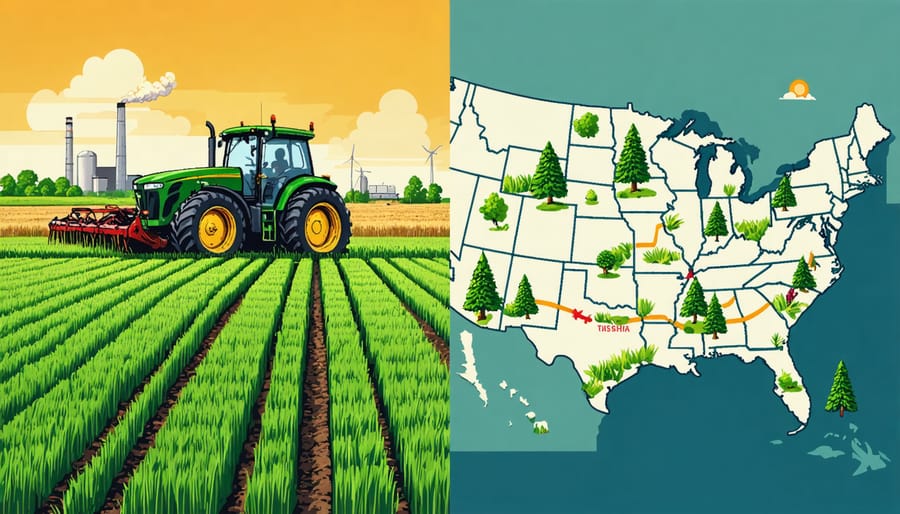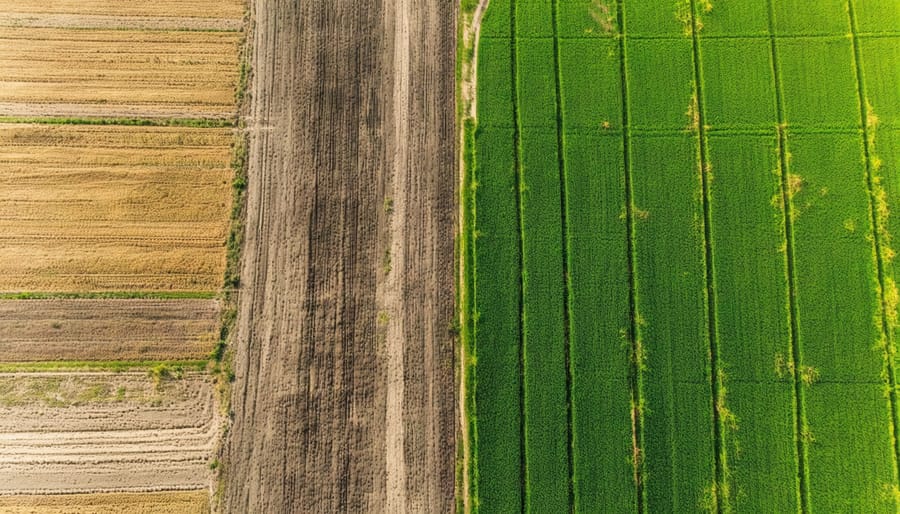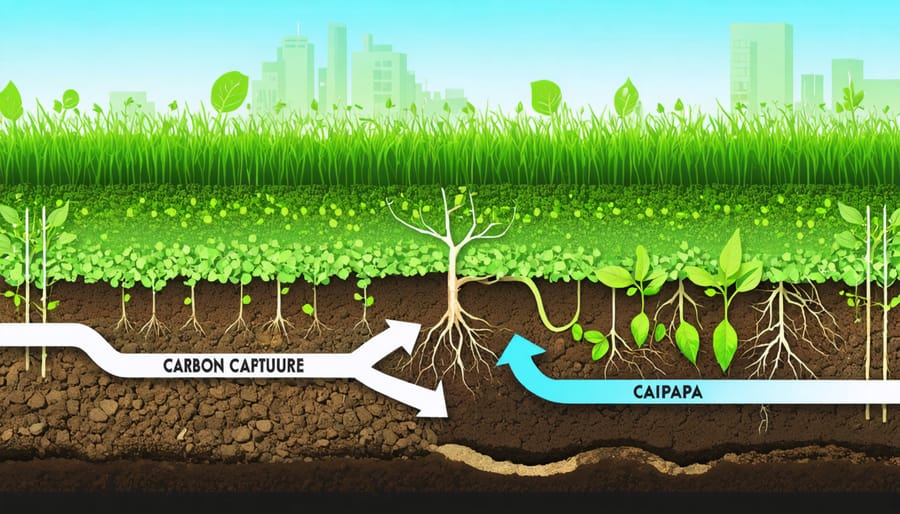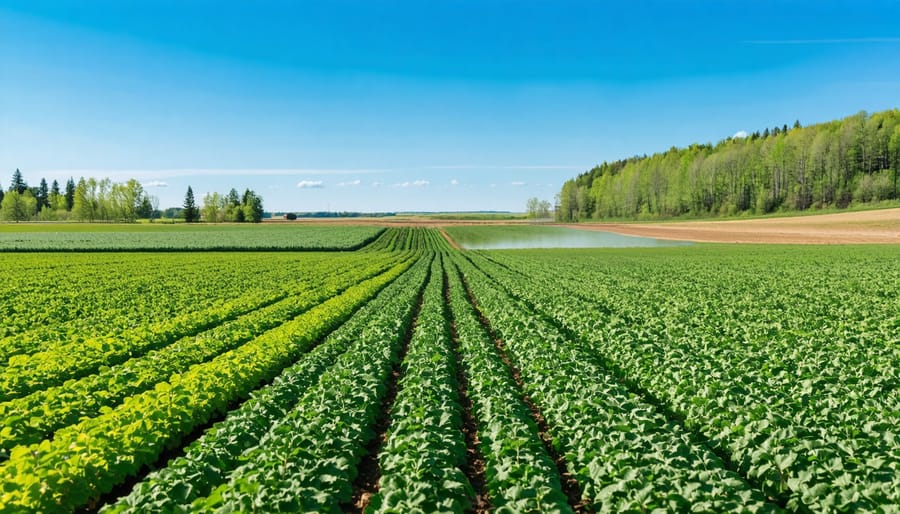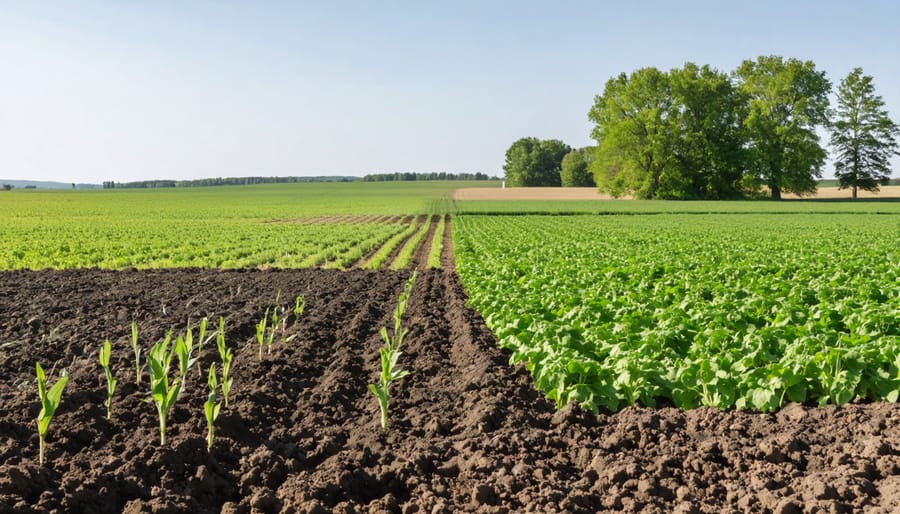Carbon modeling revolutionizes how Alberta farmers approach soil management and climate-smart agriculture. By tracking and measuring carbon sequestration in agricultural soils, these sophisticated models enable farmers to transform their land into valuable carbon sinks while maintaining productive operations. Through precise soil sampling, data analysis, and agricultural practices documentation, carbon models create a verified pathway for farmers to participate in Canada’s growing carbon credit market.
The integration of carbon modeling into farm management represents a significant shift in how we value agricultural land. Beyond traditional crop yields, these models quantify the environmental benefits of sustainable farming practices, opening new revenue streams through carbon credits. For Alberta farmers, this means transforming everyday agricultural decisions into measurable climate action while building more resilient and profitable operations.
Understanding carbon models isn’t just about environmental stewardship – it’s about positioning your farm for the future of agriculture. As carbon markets mature and sustainability becomes increasingly important to consumers and regulators, farmers who master these tools today will be better equipped to capitalize on tomorrow’s opportunities. This practical guide explores how carbon models work, their implementation in Alberta’s agricultural context, and the strategic advantages they offer modern farming operations.
Understanding Carbon Models in Agricultural Investment
Key Components of Agricultural Carbon Models
Effective agricultural carbon models rely on several interconnected components that work together to provide accurate soil carbon measurements and predictions. At their core, these models track carbon sequestration methods and outcomes across different farming practices.
The first key component is soil sampling data, which provides baseline measurements and ongoing monitoring of organic carbon levels. This includes both surface and subsurface soil analysis, typically conducted at depths of 0-30 cm and 30-100 cm.
Weather and climate data form another crucial element, as temperature, precipitation, and seasonal patterns significantly influence carbon cycling. Modern models incorporate local weather station data and climate projections specific to Alberta’s diverse growing regions.
Management practice tracking is essential, documenting activities like tillage, crop rotation, and residue management. These practices directly impact carbon storage potential and must be accurately recorded for model reliability.
Finally, vegetation and biomass monitoring helps quantify above-ground carbon storage and its relationship with root systems and soil organic matter. This often involves satellite imagery and field measurements to track crop growth and health throughout the growing season.
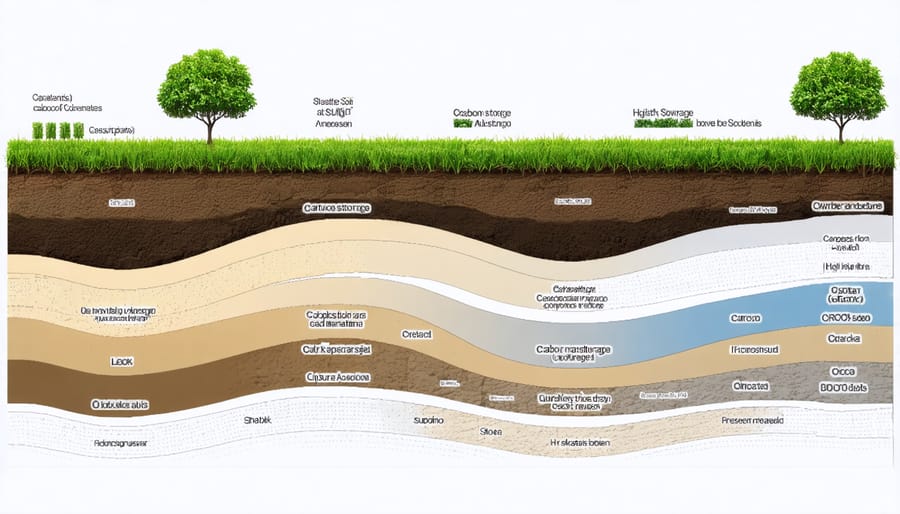
How Carbon Models Support Investment Decisions
Carbon models have become invaluable tools for both farmers and investors in Alberta’s growing carbon market. These models help predict potential carbon sequestration rates based on various farming practices, soil types, and environmental conditions, allowing for more informed investment decisions.
For farmers, these models provide estimates of how much carbon their land can potentially store through different management practices. This information helps in planning crop rotations, selecting cover crops, and implementing tillage strategies that maximize carbon capture while maintaining productivity. Many Alberta farmers are using these predictions to develop robust carbon credit proposals for investors.
From an investor’s perspective, carbon models reduce uncertainty by providing data-driven forecasts of carbon capture potential. This helps in assessing the viability of carbon offset projects and determining fair market values for carbon credits. Local success stories include partnerships between investment groups and family farms, where model predictions helped secure funding for sustainable agriculture initiatives.
These models also support long-term planning by showing how different scenarios might affect carbon storage over time. This allows both farmers and investors to make strategic decisions that balance environmental benefits with financial returns, creating sustainable partnerships that benefit our agricultural community.
Alberta’s Carbon Model Success Stories
Case Study: Central Alberta Grain Farm
The Smith family farm, located just outside Red Deer, Alberta, demonstrates how effective soil carbon investment strategies can transform agricultural operations. Over the past five years, this 2,000-hectare grain operation has successfully implemented a comprehensive carbon model that’s yielded both environmental and economic benefits.
The Smiths began by conducting baseline soil testing across their fields, establishing carbon content levels averaging 2.1% in 2018. They implemented a suite of practices including no-till farming, cover cropping with a mix of clover and rye, and crop rotation diversification incorporating canola, wheat, and pulses.
By 2023, their soil organic carbon levels increased to 2.8%, representing approximately 45 tonnes of additional carbon sequestered per hectare. This improvement generated verified carbon credits worth $32,000 annually through Alberta’s carbon offset program.
Key to their success was careful documentation of farming practices and partnering with local agricultural extension services for technical support. The family reports reduced input costs, particularly in fertilizer usage, which decreased by 20% while maintaining yield levels.
The Smiths’ approach demonstrates that implementing carbon models doesn’t require dramatic operational changes but rather thoughtful adjustments to existing practices. Their experience has inspired neighbouring farms to adopt similar strategies, creating a community-led movement toward sustainable agriculture in Central Alberta.
Local Expert Insights
Dr. Sarah Thompson, a soil scientist with Alberta Agriculture, emphasizes the practical benefits of carbon modeling for local farmers. “What we’re seeing in Central Alberta is that farmers who understand their soil carbon potential can make more informed decisions about their management practices,” she explains.
James Richardson, a third-generation farmer from Lacombe County, shares his experience implementing carbon modeling on his 2,000-hectare farm. “Initially, I was skeptical about the whole process, but after working with local agronomists and using simple modeling tools, we’ve been able to track our progress and adjust our practices accordingly.”
The Alberta Soil Carbon Initiative’s lead researcher, Dr. Michael Chen, notes that regional variations play a crucial role in carbon modeling accuracy. “Our prairie soils have unique characteristics, and we’ve developed specific modeling parameters that account for our climate conditions and farming practices,” he states.
Local agricultural extension specialist Emma Brooks points out that successful carbon modeling often starts with good record-keeping. “Many Alberta farmers are already collecting the data they need; they just need guidance on how to use it effectively,” she says. Brooks recommends starting with basic soil testing and gradually building more sophisticated modeling approaches based on individual farm needs and capabilities.
These experts agree that while carbon modeling may seem complex, local support systems and peer networks make implementation more manageable for Alberta farmers.
Implementing Carbon Models on Your Farm

Getting Started with Carbon Modeling
Starting your carbon modeling journey doesn’t have to be complicated. Many Alberta farmers begin by gathering basic soil data from their fields, including organic matter content, texture, and pH levels. These baseline measurements help establish your starting point and track progress over time.
Essential tools for getting started include a reliable soil testing kit, basic record-keeping software, and access to local weather data. Most agricultural extension offices in Alberta provide support and resources for farmers new to carbon modeling. They can help you understand your soil’s current carbon levels and potential for improvement.
Before diving in, consider mapping your fields and identifying different management zones. This approach, successfully used by many Prairie farmers, helps track changes more accurately. For example, Dave Thompson, a farmer near Red Deer, started by dividing his 2,000-hectare farm into manageable sections based on soil type and topography.
To build an effective carbon model, you’ll need:
– Recent soil test results (within the last year)
– Field management history (at least 3-5 years)
– Current cropping practices documentation
– Records of fertilizer and organic matter applications
– GPS field boundaries
Many farmers find it helpful to start with a single field as a pilot project. This allows you to familiarize yourself with the process and refine your approach before scaling up. Local agricultural advisors can help you choose appropriate modeling tools that match your farm’s specific needs and goals.
Remember, accuracy in data collection is crucial. Keep detailed records of all field operations, including dates, methods, and inputs used. This information forms the foundation of your carbon modeling efforts and will be essential for future verification and potential carbon credit opportunities.
Measuring and Monitoring Success
Success in carbon modeling requires consistent measurement and monitoring to ensure your efforts are delivering the expected results. Alberta farmers have found that combining traditional field observations with modern technology provides the most reliable tracking methods.
Start by establishing your baseline measurements through comprehensive soil testing, documenting current carbon levels, soil structure, and organic matter content. Many successful farmers recommend quarterly soil sampling from multiple field locations to account for variations across your land.
Digital tools and software platforms now make it easier to track your progress. Popular options include carbon calculators specifically designed for Canadian agricultural conditions and mobile apps that help record and analyze field data. The Alberta Carbon Registries provide standardized protocols for measuring and reporting carbon changes, ensuring your efforts align with provincial requirements.
Key performance indicators to monitor include:
– Soil organic carbon levels
– Crop yield improvements
– Soil moisture retention
– Earthworm populations
– Root development patterns
– Economic returns from carbon credits
Local success stories demonstrate the importance of maintaining detailed records. Sarah Thompson, a grain farmer near Red Deer, shares, “We photograph our fields seasonally and maintain a digital log of all our regenerative practices. This documentation has proven invaluable for carbon credit verification.”
Remember to factor in both environmental and financial metrics when assessing your carbon model’s effectiveness. Consider working with local agricultural extension services or carbon program administrators who can provide guidance on measurement protocols and help interpret your results. Regular monitoring not only validates your carbon investment but also helps identify areas for improvement in your management practices.
Financial Benefits and Investment Opportunities
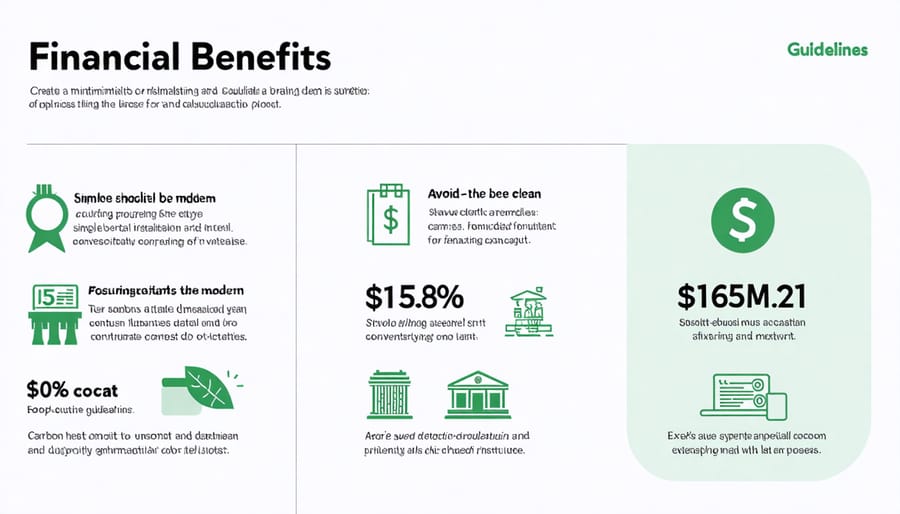
Available Carbon Credit Programs
Alberta farmers have several opportunities for profiting from soil carbon credits through various established programs. The Conservation Cropping Protocol, managed by Alberta Carbon Offset System, rewards farmers who implement reduced tillage practices. Participants can earn approximately $1.50 to $3.00 per acre annually, depending on their region and specific practices.
The ALUS (Alternative Land Use Services) Canada program provides another avenue for Alberta farmers, offering payments for converting marginally productive cropland into permanent cover or implementing beneficial management practices. This program typically offers $15 to $40 per acre annually for maintained projects.
Carbon Offset Aggregators, such as Radicle and Carbon Credit Solutions, work directly with farmers to bundle credits and facilitate market access. These aggregators handle verification processes and documentation, making it easier for farmers to participate in carbon markets.
Field to Market Canada offers performance-based incentives for sustainable agriculture practices, including soil carbon sequestration. Their program focuses on continuous improvement and provides tools for measuring environmental outcomes.
The Canadian Agricultural Partnership (CAP) also supports farmers through cost-sharing programs for implementing carbon-beneficial practices, offering up to 50% coverage for eligible projects and equipment upgrades that enhance soil carbon storage.
Long-term Revenue Potential
Carbon investment strategies offer multiple revenue streams that can significantly enhance farm profitability over time. Research from Alberta’s agricultural sector shows that farms implementing carbon models have seen long-term carbon farming profits through both direct and indirect benefits.
Primary revenue sources include carbon credit sales, which currently range from $30 to $50 per tonne in Alberta’s market. However, the real financial strength lies in the compounding benefits. Improved soil health leads to reduced input costs, with many farmers reporting 20-30% savings on fertilizer applications within three to five years.
Yield improvements typically become noticeable by year three, with some Alberta farmers experiencing 10-15% increases in crop production. This translates to approximately $50-75 more per acre in annual revenue, depending on crop type and market conditions.
Additional income opportunities emerge through premium markets for sustainably produced crops, with some buyers offering 5-10% price premiums. Many farmers also report reduced irrigation needs and better drought resilience, resulting in consistent yields even during challenging seasons.
Conservation programs and government incentives can provide supplementary income, often ranging from $10-20 per acre annually. When combined with operational savings and yield improvements, the total financial benefit typically exceeds $100 per acre annually by year five of implementation.
As we’ve explored throughout this guide, carbon modeling presents a significant opportunity for Alberta’s agricultural community to contribute to environmental sustainability while building more resilient farm operations. The integration of carbon models into farm management isn’t just about environmental stewardship – it’s about creating a stronger, more sustainable future for Canadian agriculture.
By understanding and implementing carbon modeling practices, you’re positioning your farm to benefit from emerging carbon markets while improving soil health and crop yields. The success stories we’ve shared from fellow Alberta farmers demonstrate that these practices are both practical and profitable in our unique agricultural landscape.
Remember, you don’t have to tackle this journey alone. Alberta’s agricultural community offers robust support through local extension services, farmer networks, and professional advisors who understand our specific regional challenges and opportunities. Start small, measure your progress, and gradually expand your carbon management practices as you become more comfortable with the process.
Whether you’re just beginning to explore carbon modeling or looking to enhance your existing practices, the time to act is now. The tools, resources, and support systems are in place to help you succeed. By taking steps today to implement carbon modeling on your farm, you’re not only investing in your land’s future but also contributing to Canada’s leadership in sustainable agriculture.
Let’s work together to build a more resilient and profitable agricultural sector while safeguarding our environmental legacy for future generations.


